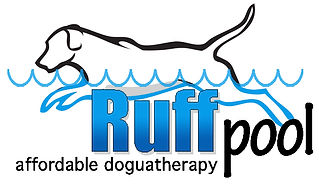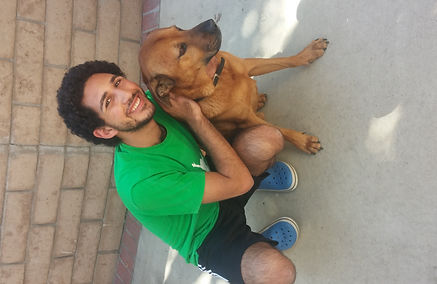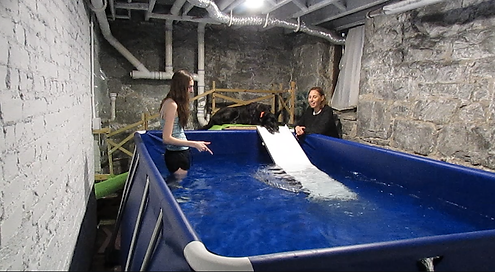


Doguatherapy relieves your dog from:
-
Joint injury:
Joint injury is a traumatic injury to the structures within or surrounding the joint. The joint structures include: the articular cartilage, which is the cartilage that covers the bone within the joint; the joint capsule and synovial membrane, which is the tissue that surrounds the joint space; tendons and ligaments; and the synovial (joint) fluid. Trauma to any of these structures may result in joint injury. Joint injuries tend to be fairly painful. Usually, only a single joint will be affected with a traumatic joint injury.
-
Hip/elbow dysplasia:
Hip dysplasia is one of the most common skeletal diseases seen in dogs. Hip dysplasia is the failure of the hip joints to develop normally (known as), gradually deteriorating and leading to loss of function of the hip joints. Hip dysplasia occurs when there is wear and tear between the ball and socket of the hip joint. It is mainly caused by genetic susceptibility of hip looseness, rapid weight gain, nutritional factors and pelvic muscle mass.
-
Spinal injury:
Spinal cord injuries are common in dogs, and the most common type of spinal cord injury is a disc herniation. Disc herniation’s can cause anything from minor discomfort to complete paralysis.
-
Mobility problems:
As dogs age, they experience many of the same mobility problems as humans. One of those problems can be difficulty moving. One frequent cause of mobility problems in dogs is hip dysplasia. Hip dysplasia occurs when there is wear and tear between the ball and socket of the hip joint.
-
Arthritis:
Canine arthritis, also known as degenerative joint disease, is characterized by pain and inflammation in a dog’s joints. Arthritis is caused by the breaking down of smooth cartilage that covers and protects the bones that form a joint. Once the bones are exposed, painful wear and tear can occur. It is also caused by joint infection, dislocation, trauma, immune system problems and obesity. Dogs with arthritis should engage in daily low-impact exercise such as walking or, if possible, swimming.
Arthritis is an inflammation in a joint. It gets worse over time, and may begin as simple morning stiffness and progress to lameness and swollen, painful joints. The good news is that while arthritis is incurable, treatment can make your dog feel a whole lot better.
-
Pre/Post – Surgery:
Pain management after surgery is particularly important. When recovering from invasive procedures, your dog is not only in pain, but weak and disoriented.
-
Circulation problems:
The heart is a part of the circulatory system along with the lungs and blood vessels. Each contraction of the heart muscle pumps blood around your dog’s body, supplying the organs with the energy and oxygen they need, while at the same time carrying away waste products.
-
Chronic Pain:
One of the biggest challenges in animal care is determining your dog's source of pain. This is partly due to their limited ability to convey the pain. The most common sign that a dog is in pain will be a vocal cue or a sign of significant agitation. Some dogs will become extremely sensitive to touch and stimuli that would normally not cause them any discomfort. Dogs that are experiencing long-term pain may exhibit signs of depression, reduction in appetite, trembling, and even biting/snapping when someone reaches out to pet them. Pain can be caused by a variety of conditions, including injury, degenerative issues in the animal's tissues, blunt trauma, or following surgery or medical treatment.
Chronic pain usually develops slowly and is long lasting. Common sources of chronic pain are age-related disorders such asarthritis, but it can also be caused by illnesses such as cancer or bone disease.
-
Geriatrics:
We expect certain changes to occur in an animal's body as the animal ages. Sometimes when dogs age they start facing joint or bone disease, senility, weakness, disorientation and increased irritability. One of the most commons signs of aging is slowing down. It will take your dog longer to get up from a lying position, and climbing stairs won’t be as easy as it used to be. Problems with vision and hearing are also common as pets age. Keep exercising. It’s still important to engage your dog in physical activity, but it’s OK to adjust the duration and intensity to fit his needs.
-
Weight reduction:
Overweight and obese dogs usually have shorter lives than their fitter, normal counterparts. Heavy dogs tend to physically interact less with their families and are less energetic and playful. Because they tend to lie around more, and it is easier to overlook early signs of illness, since we may attribute their lethargy to their ‘normal laziness.’

Picture courtesy of 4ezpools.com

Picture courtesy of 4ezpools.com

:Proven successful results of Doguatherapy
-
Increased range of motion
-
Increased body awareness
-
Increased Dog’s confidence
-
Increased balance and coordination
-
Warm water causes blood vessels to dilate increasing circulation and decreasing muscle spasms.
-
Increased flexibility and endurance

They say “A body in motion, stays in motion” and we help you apply this concept by heart. Aquatic excersis for dogs in a warm water canine pool are ideal for arthritis, improving flexibility, increasing endurance, weight loss, relaxation, building confidence, athletic & post-surgical conditioning, and general overall wellness. Our dog rehab pools offer rejuvenation for your dog’s body and mind. As a form of zero-impact exercise, the buoyancy of water relieves any weight or strain on a dog’s joint, relaxing the body and improving mobility. Without stress on his or her joints, a dog recovering from surgery or an accident can exercise and gain the muscle strength needed for rehabilitation, this is why we believe so much in canine aqua therapy and regular swimming exercies for dogs in water.
Dog Wellness:
Picture courtesy of 4ezpools.com
Sometimes you don't feel that as few as four or five pounds above the ideal body weight can put your dog at risk for developing some serious medical conditions. Unfortunately, when a dog is overweight it no longer is a question of "if" your dog will develop a condition secondary to the excess weight but "how soon and how serious!" So through having an in-home dog rehab pool designed especially for your dog, it makes it much easier to help your dog get back on his feet again and be more active through some consistent swimming excercises.
Veterinarians have been discovering the benefits of canine aqua therapy as being both therapeutic and essential for a dog's recovery from surgery or injury. The ability to simply walk, jog, or lap swim within the body of warm soothing water can mean the difference to a dog's recovery. That's really where we have made it more affordable and more accessible.
If your veterinarian told you today that your dog needed warm water therapy - also so known as "aquatherapy", where would you go to help your dog? Most community pools do not allow dogs to use the pools and dog therapy pool locations are very minimal or very expensive. As a dog lover, you want to help your dog as best as you can, but in most places, it is just tough and expensive to pursue.
It’s about access to the water therapy on a daily basis that makes it such a valuable tool, espcially when there are dog swimming pools designed in a theraputic way. To go only a couple of times week doesn't help enough - it is the ability to do it daily that makes it so important to our customers. And with our dog therapy pools, we can provide that same level of relief for all kinds of dogs as well.
Benefits of Home Care:

Benefits of Canine Love:
-
Warmth of water:
As the temperature of the therapy pool approaches core body temperature, heat energy is absorbed into the body through conduction in stillness, and through convection when moved. Heat production metabolism slows down as warmth is supplied from the outside. The viscosity of muscles is reduced and circulation to them is enhanced several-fold. In this softer, more elastic state, muscles are more amenable to stretching.
-
Pressure of water:
The body is subjected to greater pressure in water than out of it. This squeezing pressure increases both lymphatic and venous return from the limbs, helping to clear the metabolites from muscle and connective tissues, rendering the body more amenable to stretches. The raised levels of blood and lymph entering the right atrium of the heart slows it down, producing a calming effect, also favorable to stretching. Beyond this, the equal and Omni-directional pressure in water stabilizes joints, making stretches safer.
